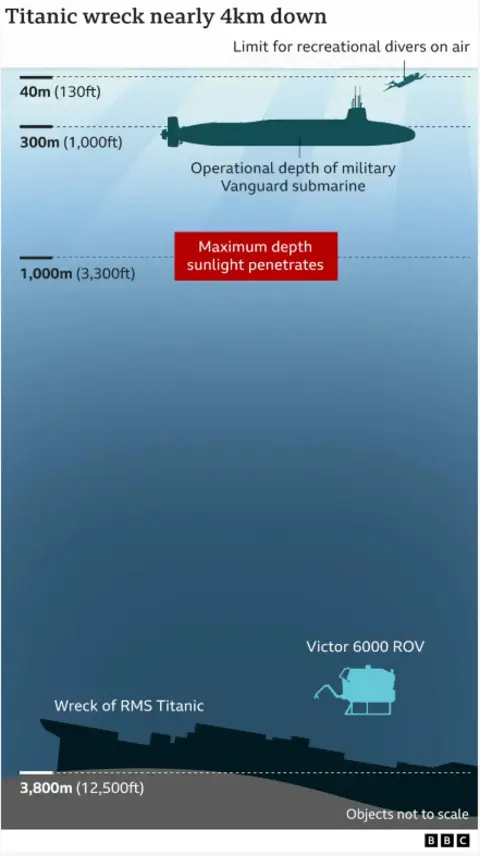An analysis of the wreckage of OceanGate’s Titan submersible has revealed how its hull came apart.
Images of the craft’s pieces scattered across the sea floor show the carbon fibre hull had separated into multiple layers – a known problem with the material.
The evidence was presented on Wednesday to the US Coast Guard at a public hearing into the catastrophic failure of the sub in June 2023, which killed all five people on board.
It was not confirmed that the hull was the first part of the sub to fail, but the details suggest it is a key focus of the investigation.
Investigators are seeking to uncover the details of what led to the tragedy and find recommendations that could prevent future deadly voyages.
Titan, operated by OceanGate, imploded less than two hours into its descent during a dive to the wreckage of the Titanic.
Titan’s hull was made from numerous layers of carbon fibre mixed with resin.
It’s a highly unusual material for a deep sea sub because it is unreliable under pressure – most crafts are made from metals like titanium.
Don Kramer, an engineer at the National Transportation Safety Board, showed the US Coast Guard a series of images of sections of the hull on the sea floor.
He described how in some fragments, the carbon fibre layers had come apart – a known process called delamination.
In other places, the material was cracked.
It was not confirmed whether the damage to the hull had caused the implosion.
“I’m not offering any analysis at this point as to whether [the damage] occurred before or after the implosion,” he said.
Mr Kramer also described how his team had analysed samples of Titan’s hull left over from its construction. They looked at offcuts from when the sub was made.
He described that the samples showed areas where the carbon fibre layers had separated, as well as wrinkles, voids and gaps.
Any irregularities in the material would have affected how the hull performed under the immense pressures under water.

The US Coast Guard was also told how a loud bang heard during a dive a year before the disaster may have damaged the sub’s structure.
Passengers had reported it while the sub was returning to the surface after a dive to the Titanic in 2022. One passenger described it as an “alarming sonic event” while giving evidence last week.
At the time, OceanGate CEO Stockton Rush said he thought it was the sub shifting in the metal frame that surrounded it.
But a new analysis of sensor data by the National Transportation Safety Board suggested that the noise signalled some kind of change to the fabric of the hull.
This may have altered the way the sub was able to respond to the pressures of the deep.
Bill Kemper, of Kemper Engineering, had been asked to compile an independent report into the failure of Titan by the US Coast Guard.
He concluded that at present the root cause for the failure was indeterminate.
“At this time, there are multiple unmitigated single point failures, single mode failures,” he told the Coast Guard.
In his lengthy presentation, he described multiple weaknesses in the sub’s design.
This included an analysis of the sub’s window, that suggested it was being pushed out of shape on each dive and this could eventually result in it cracking. He also outlined serious problems with the carbon fibre hull.

